Résultats de recherche de titre
Articles 1491501 à 1491520 sur 1499095
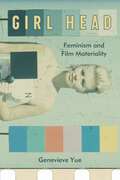
Girl Head: Feminism and Film Materiality
Par Genevieve Yue. 2021
Girl Head shows how gender has had a surprising and persistent role in film production processes, well before the image…
ever appears onscreen.For decades, feminist film criticism has focused on issues of representation: images of women in film. But what are the feminist implications of the material object underlying that image, the filmstrip itself? What does feminist analysis have to offer in understanding the film image before it enters the realm of representation?Girl Head explores how gender and sexual difference have been deeply embedded within film materiality. In rich archival and technical detail, Yue examines three sites of technical film production: the film laboratory, editing practices, and the film archive. Within each site, she locates a common motif, the vanishing female body, which is transformed into material to be used in the making of a film. The book develops a theory of gender and film materiality through readings of narrative film, early cinema, experimental film, and moving image art.This original work of feminist media history shows how gender has had a persistent role in film production processes, well before the image ever appears onscreen.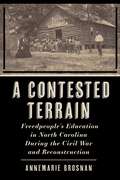
A testament to the resilience and determination of Black North Carolinians to achieve educational equalityThis book examines the educational experiences…
of Black North Carolinians during the American Civil War and Reconstruction period, 1861–1877. By highlighting the collaborative efforts that led to the growing network of schools for the formerly enslaved people, it argues that schooling the Freedpeople was a contested terrain, fraught with conflicting visions of Black freedom and the role education should play. Although Black men and women emerged as the driving force behind the educational endeavors of this period, their work was facilitated by Northern aid and missionary societies, the federally-mandated Freedmen’s Bureau, and over 1,400 teachers from various regional and racial backgrounds. Yet the educational landscape was far from uniform, and the individuals and organizations involved had their distinct visions regarding the nature and purpose of Freedpeople’s education.Through the use of qualitative and quantitative research methods, this book offers new insights into the reasons why Black and white Northerners and Southerners elected to become teachers. By examining their diverse motivations and experiences, it argues that attitudes toward Freedpeople’s education were complex and fluid, defying neat characterization.Despite mounting obstacles and opposition to their work, Black North Carolinians’ unrelenting quest for education ultimately gave rise to free public schooling for both races, the professionalization of Black teachers, and an extensive network of Historically Black Colleges and Universities.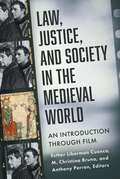
Law, Justice, and Society in the Medieval World: An Introduction through Film (Fordham Series in Medieval Studies)
Par Esther Liberman Cuenca, M. Christina Bruno, and Anthony Perron. 2025
This coursebook is the first full-length study of cinematic “legal medievalism,” or the modern interpretation of medieval law in film…
and popular cultureFor more than a century, filmmakers have used the “Middle Ages” to produce popular entertainment and comment on contemporary issues. Each of the twenty chapters in Law, Justice, and Society in the Medieval World represents an original contribution to our understanding of how medieval regulations, laws, and customs have been depicted in film. It offers a window into the “rules” of medieval society through the lens of popular culture.This book includes analyses of recent and older films, avant-garde as well as popular cinema. Films discussed in this book include Braveheart (1995), Kingdom of Heaven (2005), The Passion of Joan of Arc (1928), The Last Duel (2021), The Green Knight (2021), The Little Hours (2017), and The Adventures of Robin Hood (1938), among others.Each chapter explores the contemporary context of the film in question, the medieval literary or historical milieu the film references, and the lessons the film can teach us about the medieval world. Attached to each chapter is an appendix of medieval documentary sources and reading questions to prompt critical reflection.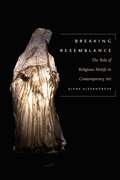
Breaking Resemblance: The Role of Religious Motifs in Contemporary Art
Par Alena Alexandrova. 2017
In recent decades curators and artists have shown a distinct interest in religion, its different traditions, manifestations in public life,…
gestures and images. Breaking Resemblance explores the complex relationship between contemporary art and religion by focusing on the ways artists re-work religious motifs as a means to reflect critically on our desire to believe in images, on the history of seeing them, and on their double power— iconic and political. It discusses a number of exhibitions that take religion as their central theme, and a selection of works by Bill Viola, Lawrence Malstaf, Victoria Reynolds, and Berlinde de Bruyckere—all of whom, in their respective ways and media, recycle religious motifs and iconography and whose works resonate with, or problematize the motif of, the true image.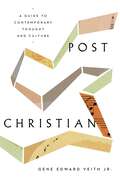
Post-Christian: A Guide to Contemporary Thought and Culture
Par Gene Edward Veith Jr.. 2020
Undaunted Hope in a Post-Christian World We live in a post-Christian world. Contemporary thought—claiming to be “progressive” and “liberating”—attempts to…
place human beings in God’s role as creator, lawgiver, and savior. But these post-Christian ways of thinking and living are running into dead ends and fatal contradictions. This timely book demonstrates how the Christian worldview stands firm in a world dedicated to constructing its own knowledge, morality, and truth. Gene Edward Veith Jr. points out the problems with how today’s culture views humanity, God, and even reality itself. He offers hope-filled, practical ways believers can live out their faith in a secularist society as a way to recover reality, rebuild culture, and revive faith.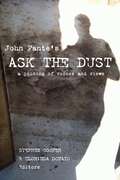
John Fante's Ask the Dust: A Joining of Voices and Views (Critical Studies in Italian America)
Par Stephen Cooper and Clorinda Donato. 2020
This volume assembles for the first time a staggering multiplicity of reflections and readings of John Fante’s 1939 classic, Ask…
the Dust, a true testament to the work’s present and future impact.The contributors to this work—writers, critics, fans, scholars, screenwriters, directors, and others—analyze the provocative set of diaspora tensions informing Fante’s masterpiece that distinguish it from those accounts of earlier East Coast migrations and minglings. A must-read for aficionados of L.A. fiction and new migration literature, John Fante’s “Ask the Dust”: A Joining of Voices and Views is destined for landmark status as the first volume of Fante studies to reveal the novel’s evolving intertextualities and intersectionalities.Contributors: Miriam Amico, Charles Bukowski, Stephen Cooper, Giovanna DiLello, John Fante, Valerio Ferme, Teresa Fiore, Daniel Gardner, Philippe Garnier, Robert Guffey, Ryan Holiday, Jan Louter, Chiara Mazzucchelli, Meagan Meylor, J’aime Morrison, Nathan Rabin, Alan Rifkin, Suzanne Manizza Roszak, Danny Shain, Robert Towne, Joel Williams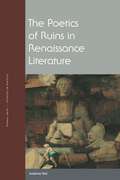
The Poetics of Ruins in Renaissance Literature (Verbal Arts: Studies in Poetics)
Par Andrew Hui. 2017
The Renaissance was the Ruin-naissance, the birth of the ruin as a distinct category of cultural discourse, one that inspired…
voluminous poetic production. For humanists, the ruin became the material sign that marked the rupture between themselves and classical antiquity. In the first full-length book to document this cultural phenomenon, Andrew Hui explains how the invention of the ruin propelled poets into creating works that were self-aware of their absorption of the past as well as their own survival in the future.
Portrait: Portraits Of Henri Cartier-bresson (Lit Z)
Par Jean-Luc Nancy. 2018
This book examines the practice of portraits as a way in to grasping the paradoxes of subjectivity. To Nancy, the…
portrait is suspended between likeness and strangeness, identity and distance, representation and presentation, exactitude and forcefulness. It can identify an individual, but it can also express the dynamics by means of which its subject advances and withdraws.The book consists of two extended essays written a decade apart but in close conversation, in which Nancy considers the range of aspirations articulated by the portrait. Heavily illustrated, it includes a newly written preface bringing the two essays together and a substantial Introduction by Jeffrey Librett, which places Nancy’s work within the range of thinking of aesthetics and the subject, from religion, to aesthetics, to psychoanalysis.Though undergirded by a powerful grasp of the philosophical and psychoanalytic tradition that has rendered our sense of the subject so problematic, Nancy’s book is at heart a delightful, unpretentious reading of three dozen portraits, from ancient drinking mugs to recent experimental or parodic pieces in which the artistic representation of a sitter is made from their blood, germ cultures, or DNA.The contemporary world of ubiquitous photos, Nancy argues, in no way makes the portrait a thing of the past. On the contrary, the forms of appearing that mark the portrait continue to challenge how we see the bodies and representations that dominate our world.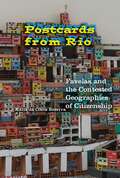
Postcards from Rio: Favelas and the Contested Geographies of Citizenship
Par Kátia Da Bezerra. 2017
Through the analysis of a variety of favela-based visual cultural productions by young people and contemporary theorists, Postcards from Rio…
examines the complex relationship between citizenship and urban space in contemporary Rio de Janeiro.By analyzing videos and photographs, Kátia da Costa Bezerra illustrates how citizens of favelas are reshaping their sense of belonging as subjects and as a legitimate part of the city. A groundbreaking study that examines more deeply the relationship between urban space, citizenship, and imagery originating in the favelas, Postcards from Rio sheds crucial light on how contemporary lenses are defining and mediating the meanings of space and citizenship as strategies of empowerment. The city emerges as a political space where multiplicities of perspectives are intertwined with demands for more inclusive forms of governance.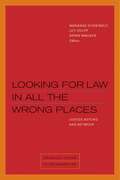
Looking for Law in All the Wrong Places: Justice Beyond and Between (Berkeley Forum in the Humanities)
Par Wendy Brown, Saba Mahmood, Daniel Boyarin, Christopher Tomlins, Samera Esmeir, Ramona Naddaff, Kathryn Abrams, Sara Ludin, Sarah Song, Rebecca M. McLennan, Bath H. Piatote, Daniel Fisher. 2019
For many inside and outside the legal academy, the right place to look for law is in constitutions, statutes, and…
judicial opinions. This book looks for law in the “wrong places”—sites and spaces in which no formal law appears. These may be geographic regions beyond the reach of law, everyday practices ungoverned or ungovernable by law, or works of art that have escaped law’s constraints.Looking for Law in All the Wrong Places brings together essays by leading scholars of anthropology, cultural studies, history, law, literature, political science, race and ethnic studies, religion, and rhetoric, to look at law from the standpoint of the humanities. Beyond showing law to be determined by or determinative of distinct cultural phenomena, the contributors show how law is itself interwoven with language, text, image, and culture.Many essays in this volume look for law precisely in the kinds of “wrong places” where there appears to be no law. They find in these places not only reflections and remains of law, but also rules and practices that seem indistinguishable from law and raise challenging questions about the locations of law and about law’s meaning and function. Other essays do the opposite: rather than looking for law in places where law does not obviously appear, they look in statute books and courtrooms from perspectives that are usually presumed to have nothing to say about law.Looking at law sideways, or upside down, or inside out defamiliarizes law. These essays show what legal understanding can gain when law is denied its ostensibly proper domain.Contributors: Kathryn Abrams, Daniel Boyarin, Wendy Brown, Marianne Constable, Samera Esmeir, Daniel Fisher, Sara Ludin, Saba Mahmood, Rebecca McLennan, Ramona Naddaff, Beth Piatote, Sarah Song, Christopher Tomlins, Leti Volpp, Bryan Wagner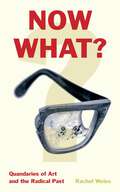
Now What?: Quandaries of Art and the Radical Past
Par Rachel Weiss. 2021
Now What? is an innovative exploration of artworks and films that return to radical histories subject to erasure or otherwise…
lost or occluded over time. The moments returned to—the Cuban Revolution, Chile’s 1973 coup d’état, the ambiguous 1989 “revolution” in Romania, and the mayhem surrounding the Red Army Faction in 1970s West Germany—stand as historical watersheds, foundational and precipitate moments in the history of radical politics. Delving into these key historical moments by way of Tania Bruguera’s 2009 performance Tatlin’s Whisper in Havana, filmmaker Patricio Guzmán’s decades-long cycle of returns to Allende’s Chile, Harun Farocki and Andrei Ujica’s Videograms of a Revolution, Corneliu Porumboiu’s 12:08 East of Bucharest, the film Germany in Autumn, and Gerhard Richter’s October 18, 1977 suite of paintings, Rachel Weiss convincingly threads these works together through subtle and illuminating reflections on the complex dynamics involved in historical trauma and memory, addressing key questions about the meanings and uses of the past.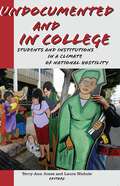
Undocumented and in College: Students and Institutions in a Climate of National Hostility
Par Terry-Ann Jones and Laura Nichols, Editors. 2017
The current daily experiences of undocumented students as they navigate the processes of entering and then thriving in Jesuit colleges…
are explored alongside an investigation of the knowledge and attitudes among staff and faculty about undocumented students in their midst, and the institutional response to their presence. Cutting across the fields of U.S. immigration policy, theory and history, religion, law, and education, Undocumented and in College delineates the historical and present-day contexts of immigration, including the role of religious institutions. This unique volume, based on an extensive two-year study (2010–12) of undocumented students at Jesuit colleges in the United States and with contributions from various scholars working within these institutions, incorporates survey research and in-depth interviews to present the perspectives of students, staff, and the institutions.
Intercarnations: Exercises in Theological Possibility
Par Catherine Keller. 2017
Intercarnations is an outstanding collection of provocative, elegantly written essays—many available in print for the first time—by renowned theologian Catherine…
Keller.Affirmations of body, flesh, and matter pervade current theology and inevitably echo with the doctrine of the incarnation. Yet, in practice, materialism remains contested ground—between Marxist and capitalist, reductive and postmodern iterations. Current theological explorations of our material ecologies cannot elude the tug or drag of the doctrine of “the incarnation.” But what if we were to redistribute, rather than repress, that singular body? Might we free it—along with the bodies in which it is boundlessly entangled—from a troubling history of Christian exceptionalism?In these immensely significant, highly original essays, theologian Catherine Keller proposes to liberate the notion of the divine made flesh from the exclusivity of orthodox Christian theology’s Jesus of Nazareth. Throughout eleven scintillating essays, she attends to bodies diversely religious, irreligious, social, animal, female, queer, cosmopolitan, and cosmic, highlighting the intermittencies and interdependencies of intra-world relations. According to Keller, when God is cast on the waters of a polydoxical indeterminacy, s/he/it returns manifold. For the many for whom theos has become impossible, Intercarnations exercises new theological possibilities through the diffraction of contextually diverse multiplicities.A groundbreaking work that pulls together a wide range of intersecting topics and methodologies, Intercarnations enriches and challenges current theological thinking. The essays reach back into feminist, process, and postcolonial discourses, and further back into messianic and mystical potentialities. They reach out into Asian as well as inter-Abrahamic comparison and forward toward a political theology of the Earth, queerly entangling climate catastrophe in materializations resistant to every economic, social, and anthropic exceptionalism. According to Keller, Intercarnations offers itself as a transient trope for the mattering of our entangled difference, meaning to stir up practices of a better planetarity. In Intercarnations, with Catherine Keller as their erudite guide, readers gain access to new worlds of theological possibility and perception.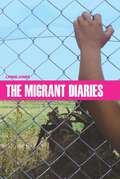
The Migrant Diaries (International Humanitarian Affairs)
Par Lynne Jones. 2020
What is it like to run away from bombing, lose your family, and work out how to take care of…
yourself in a foreign country when you are seven years old? What do you do when the woman who promised you a good job in Europe turns out to have sold you into prostitution? How do you escape from torture and detention in Libya? What is it like to almost drown in the Mediterranean and then be confined in a garbage and rat-filled settlement on a Greek island for years?In this book, Lynne Jones answers these questions by combining direct testimony from children with a blazingly frank eyewitness account of providing mental health support on the front line of the migrant crisis across Europe and Central America in the past five years. Her diaries document how a compassionate welcome shifted to indifference and hostility toward those seeking refuge from war, disaster, and poverty in the richest countries in the world. They shine light on what it is like to be caught up on the front lines of the migrant crises in Europe and Central America, either as a person in flight or as a volunteer trying to help. They show how people who have fled war, poverty, and disaster—trapped in degrading, humiliating living conditions—have responded with resourcefulness and creativity. In the absence of most large professional humanitarian agencies, migrants and volunteers together have created a new form of humanitarianism that challenges old ways of working.Today there are 79 million forcibly displaced people in the world today, 1 percent of the world’s population. Understanding the perspectives of people on the move has never been more important.The Author's profits from this book will be donated to the charity: CHOOSE LOVE/HELP REFUGEES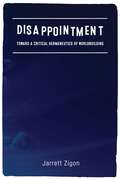
Disappointment: Toward a Critical Hermeneutics of Worldbuilding
Par Jarrett Zigon. 2018
Increasingly, anthropologists, political theorists and philosophers are calling for imaginative and creative analyses and theories that might help us think…
and bring about an otherwise. Disappointment responds to this call by showing how collaboration between an anthropologist and a political movement of marginalized peoples can disclose new possibilities for being and acting politically. Drawing from nearly a decade of research with the global anti-drug war movement, Jarrett Zigon puts ethnography in dialogue with both political theory and continental philosophy to rethink some of the most fundamental ontological, political and ethical concepts. The result is to show that ontological starting points have real political implications, and thus, how an alternative ontological starting point can lead to new possibilities for building worlds more ethically attuned to their inhabitants.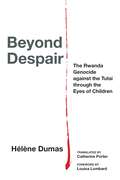
Winner, Prix Pierre LafueWinner, Prix lycéen du livre d’histoire des Rendez-vous de l’histoire de BloisIn the archives of the main…
institution in charge of the history and memory of the genocide in Rwanda, several bundles of fragile little school notebooks contain, in the silence of accumulated dust, the stories of around a hundred surviving children. Written in 2006 at the initiative of a Rwandan survivors’ association, as a testimonial and psychological catharsis, these accounts by children who have since become young men and women tell the story of their experience of the genocide, as well as of “life before” and “life after.” The words of these children, the cruel realism of the scenes they describe, the power of the emotions they express, provide the historian with an unparalleled insight into the subjectivities of the survivors, and also enable us to take on board the murderous discourse and gestures of those who eradicated their world of childhood forever. Far from abstract postulates on the “unspeakable,” Beyond Despair offers a reflection on the conditions that make audible such an experience of dereliction in the twilight of the twentieth century.This work received support for excellence in publication and translation from Albertine Translation, a program created by Villa Albertine and funded by FACE Foundation.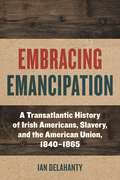
WINNER, 2024 LAWRENCE J. McCAFFREY PRIZE FOR BEST BOOK ON IRISH AMERICAChallenges conventional narratives of the Civil War era that…
emphasize Irish Americans’ unceasing opposition to Black freedomEmbracing Emancipation tackles a perennial question in scholarship on the Civil War era: Why did Irish Americans, who claimed to have been oppressed in Ireland, so vehemently opposed the antislavery movement in the United States? Challenging conventional answers to this question that focus on the cultural, political, and economic circumstances of the Irish in America, Embracing Emancipation locates the origins of Irish American opposition to antislavery in famine-era Ireland. There, a distinctively Irish critique of abolitionism emerged during the 1840s, one that was adopted and adapted by Irish Americans during the sectional crisis. The Irish critique of abolitionism meshed with Irish Americans’ belief that the American Union would uplift Irish people on both sides of the Atlantic—if only it could be saved from the forces of disunion.Whereas conventional accounts of the Civil War itself emphasize Irish immigrants’ involvement in the New York City draft riots as a brutal coda to their unflinching opposition to emancipation, Delahanty uncovers a history of Irish Americans who embraced emancipation. Irish American soldiers realized that aiding Black southerners’ attempts at self-liberation would help to subdue the Confederate rebellion. Wartime developments in the United States and Ireland affirmed Irish American Unionists’ belief that the perpetuity of their adopted country was vital to the economic and political prospects of current and future immigrants and to their hopes for Ireland’s independence. Even as some Irish immigrants evinced their disdain for emancipation by lashing out against Union authorities and African Americans in northern cities, many others argued that their transatlantic interests in restoring the Union now aligned with slavery’s demise. While myriad Irish Americans ultimately abandoned their hostility to antislavery, their backgrounds in and continuously renewed connections with Ireland remained consistent influences on how the Irish in America took part in debate over the future of American slavery.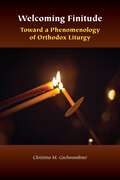
Welcoming Finitude: Toward a Phenomenology of Orthodox Liturgy (Orthodox Christianity and Contemporary Thought)
Par Christina M. Gschwandtner. 2019
What does it mean to experience and engage in religious ritual? How does liturgy structure time and space? How do…
our bodies move within liturgy, and what impact does it have on our senses? How does the experience of ritual affect us and shape our emotions or dispositions? How is liturgy experienced as a communal event, and how does it form the identity of those who participate in it? Welcoming Finitude explores these broader questions about religious experience by focusing on the manifestation of liturgical experience in the Eastern Christian tradition. Drawing on the methodological tools of contemporary phenomenology and on insights from liturgical theology, the book constitutes a philosophical exploration of Orthodox liturgical experience.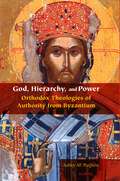
In the current age where democratic and egalitarian ideals have preeminence, Eastern Orthodox Christianity, among other hierarchically organized religious traditions,…
faces the challenging questions: “Why is hierarchy maintained as the model of organizing the church, and what are the theological justifications for its persistence?” These questions are especially significant for historically and contemporarily understanding how Orthodox Christians negotiate their spiritual ideals with the challenges of their social and ecclesiastical realities.To critically address these questions, this book offers four case studies of historically disparate Byzantine theologians from the sixth to the fourteenth-centuries—Dionysius the Areopagite, Maximus the Confessor, Niketas Stethatos, and Nicholas Cabasilas—who significantly reflect on the relationship between spiritual authority, power, and hierarchy in theoretical, liturgical, and practical contexts. Although Dionysius the Areopagite has been the subject of much scholarly interest in recent years, the applied theological legacy of his development of “hierarchy” in the Christian East has not before been explored.Relying on a common Dionysian heritage, these Byzantine authors are brought into a common dialogue to reveal a tradition of constructing authentic ecclesiastical hierarchy as foremost that which communicates divinity.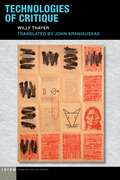
Technologies of Critique (Idiom: Inventing Writing Theory)
Par Willy Thayer. 2020
Critique—a program of thought as well as a disposition toward the world—is a crucial resource for politics and thought today,…
yet it is again and again instrumentalized by institutional frames and captured by market logics. Technologies of Critique elaborates a critical practice that eludes such capture. Building on Chile’s history of dissident artists and the central entangling of politics and aesthetics, Thayer engages continental philosophical traditions, from Aristotle, Descartes and Heidegger through Walter Benjamin and Gilles Deleuze, and in implicit conversation with the Judith Butler, Roberto Esposito, and Bruno Latour, to help pinpoint the technologies and media through which art intervenes critically in socio-political life.